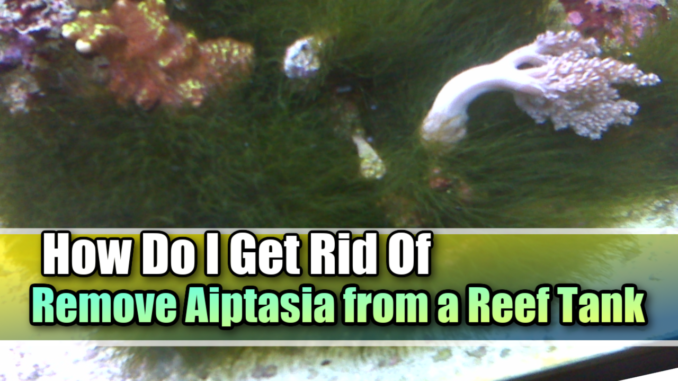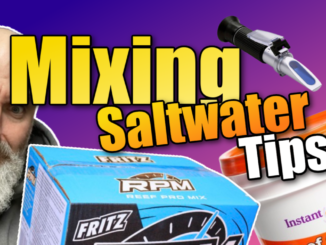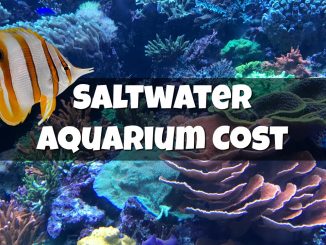
Green hair algae can be a common nuisance in reef tanks, and controlling it in a reef environment requires a delicate balance to ensure the health of both your corals and the overall ecosystem.
Green hair algae thrive under specific conditions, and understanding these factors can help you prevent its growth in your aquarium or reef tank.
Here are the key conditions that promote the growth of green hair algae:
Excessive Light:
- Green hair algae often flourish in aquariums or reef tanks with excessive light exposure.
- Extended photoperiods or high-intensity lighting can encourage their growth.
- Algae can also thrive in areas with uneven lighting, such as shadowy spots behind rocks or decorations.
- Over use of Reds and Greens in LED lighting.
Nutrient Rich Environment:
- Green hair algae require an abundance of nutrients, particularly nitrate (NO3-) and phosphate (PO4-).
- Overfeeding your fish or overstocking your tank can contribute to nutrient buildup.
- Decaying organic matter, such as uneaten food and detritus, can release nutrients into the water.
Imbalance in the Ecosystem:
- Disruptions in the biological balance of the aquarium, such as a lack of herbivorous grazers or beneficial microorganisms, can contribute to algae growth.
- A healthy and diverse population of algae-eating creatures can help control green hair algae.
Inadequate Maintenance:
- Neglecting regular maintenance tasks like water changes, cleaning the substrate, and cleaning or replacing filter media can lead to the accumulation of nutrients.
- Poor maintenance can also result in poor water quality, which is conducive to algae growth.
To prevent green hair algae from thriving, it’s essential to maintain stable water conditions, provide proper lighting, and practice regular tank maintenance. Ensuring that your aquarium or reef tank is well-balanced and that nutrient levels are within acceptable ranges is key to keeping green hair algae in check.
8 steps to get rid of green hair algae in a reef tank:
Manual Removal:
- Gently scrub and remove the algae from rocks and corals using a soft brush or toothbrush.
- Be careful not to damage or stress your corals during the process.
Improve Water Quality:
- Regularly test and maintain optimal reef tank parameters for your reef tank, including salinity, temperature, pH, and calcium levels.
- Monitor and control nitrate and phosphate levels, as high nutrient concentrations can fuel algae growth.
- Perform regular water changes to dilute nutrient levels.
Reduce Lighting:
- Adjust your lighting schedule and intensity to limit the amount of light the tank receives. Many green hair algae species thrive in high light conditions.
- Consider using a quality LED lighting system with programmable timers to customize the lighting schedule. Be sure to reduce red and green LEDs to help prevent growth.
Use Protein Skimmers:
- Protein skimmers are effective at removing dissolved organic compounds from the water, which can help reduce nutrient levels.
Add Algae Grazers:
- Introduce herbivorous reef-friendly animals such as certain species of tangs, blennies, and sea urchins. These creatures can help keep algae growth in check.
- Be cautious when selecting algae grazers to ensure they are compatible with your existing tank inhabitants.
Cultivate Macroalgae:
- Grow macroalgae like Chaetomorpha or Caulerpa in a refugium or separate area of your sump. These macroalgae can compete with green hair algae for nutrients.
- Regularly trim and remove excess macroalgae to prevent it from becoming a nuisance itself.
Chemical and Biological Solutions (as a last resort):
- Consider using phosphate-absorbing media, such as GFO (granular ferric oxide) or PhosGuard, in your filter to lower phosphate levels.
- Some reef-safe chemical treatments are available, such as Phosphate RX or Flux Rx, but they should be used sparingly and carefully as a last resort.
- Biological solutions such as dosing beneficial bacteria or adding Live copepods can help with nutrient control.
Regular Maintenance:
- Stay committed to regular tank maintenance, including cleaning the protein skimmer, changing filter media, and vacuuming the substrate.
- Be consistent in your efforts to maintain good reef tank parameters.
Remember that getting rid of green hair algae in a reef tank can be a gradual process, and it’s essential to maintain a balanced and stable environment for your corals and other tank inhabitants. Be patient and persistent in your efforts, and consider seeking advice from experienced reefkeepers or a local aquarium store if you’re facing particularly stubborn algae issues.




